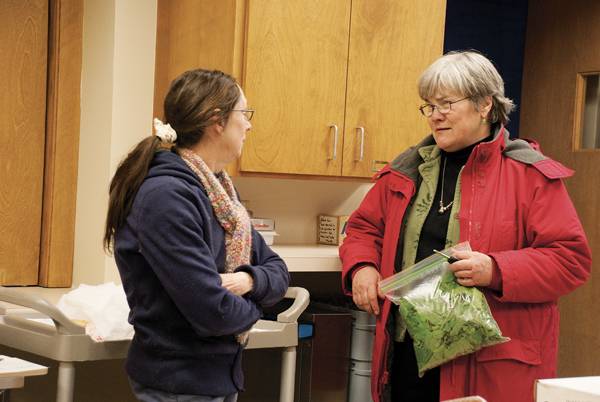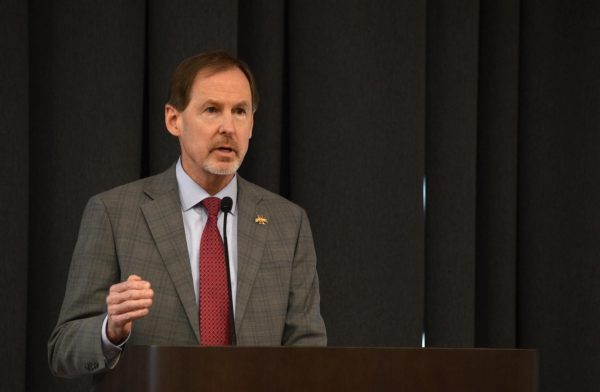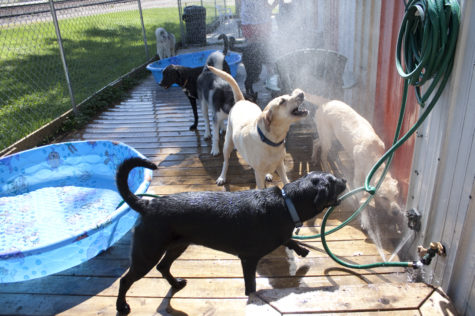Ames residents spend $250,000 on food per day

Residents of Ames who are involved in Farm to Folk program, picks up their crop at First Christian Church. Photo: Erin Oftelie/Iowa State Daily
May 31, 2010
Ames residents are spending roughly $250,000 a day on food.
Rich Schuler and his partner, Teresa Opheim, along with Practical Farmers of Iowa, are conducting a study tracking how much 19 individuals are spending daily on food, and where that food comes from.
Vesuvius Wood Fired Pizza, 1620 S. Kellogg Ave., and Gamma Phi Beta, 318 Pearson Ave., are also participating in the study.
“A PFI member survey question started it,” said Tomoko Ogawa, program consultant of PFI. “We wanted to see if they were interested in participating in some sort of project to help increase local food purchases.”
Ogawa and Schuler are looking at how much money Ames residents are spending on local food.
“It’s a lot of visual feedback, looking at how the numbers compare to our perception,” Schuler said. “We perceive them as being much higher locally than they actually are. If we want to get somewhere, we have to know where we are now.”
Schuler’s household ratio right now is 23 percent bought locally and 77 percent bought from a distance.
Residents buy food locally through Community Supported Agriculture, and Farm to Folk — an online way to buy fresh products from local farmers — every Tuesday downtown.
“It’s important to realize how much we depend on the conventional food system and its dominant existence,” Ogawa said. “We need to grasp where we are right now. We encourage feedback from people on their needs and how frustrated they are about how little they’re spending locally. We can step in and help.”
Schuler said PFI is very member-driven, the members dictate where the organization goes.
Both Schuler and Ogawa agreed they don’t know that there is an ideal number or percentage of locally purchased food versus non-locally purchased food.
“It’s not good versus bad, it’s just different,” Schuler said. “The advantages of buying locally are that it maintains the community, but it’s not realistic to expect 90 percent local and 10 percent distance.”
Schuler said since we’re just coming out of winter, the ratio will shift more locally. He said the ratio is very fluid and tends to follow the seasons.
Opheim, executive director of PFI, said they have diverse members.
“They’re all interested in more diverse farming operations such as a farmer who has corn and soybeans and cattle and pigs,” she said. “It gives them more resiliency in case something goes wrong.”
Opheim said if people start buying more locally, farmers will get about 80 percent of the food dollars.
Opheim and Ogawa also said ISU students can get involved in the effort.
“I think the first important step is to re-examine how much and where they spend their money on food, and what greater influences their patterns might have,” Ogawa said. “Also they can look around and check out what’s around in terms of local foods in Ames such as the Farm to ISU program.”
Farm to ISU “aims to increase food purchases from local farmers,” Ogawa said.
Schuler said the main goal of the study is to increase awareness of how food dollars are spent.
“Once we are aware, we can evaluate if we’re consistent with our goals and personal philosophies and make change,” Schuler said.
The study will continue until next May, when PFI will examine the results and decide what will be the next logical plan of action.












